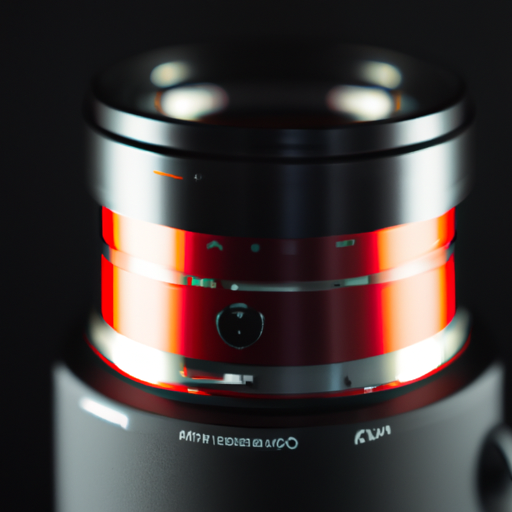

An inverter is a device that converts direct current (DC) into alternating current (AC) and is widely used in renewable energy systems such as solar and wind power generation. With the rapid development of renewable energy, inverters play a crucial role in energy conversion and management. This article aims to introduce the top 10 mainstream inverter models on the market to help readers understand the characteristics of different models and their suitable applications.
The main function of an inverter is to convert DC to AC. Its working principle involves controlling the flow of current through switch elements (such as transistors) to adjust voltage and frequency. The main components of an inverter include:
Switch elements: Used to control the flow of current.
Filter: Used to smooth the output waveform and reduce harmonics.
Control circuit: Used to monitor and adjust the output voltage and frequency.
Inverters can be classified into several types based on the output waveform:
Pure sine wave inverter: Output waveform closely resembles an ideal sine wave, suitable for devices with high power quality requirements.
Modified sine wave inverter: Output waveform is a stepped waveform, suitable for devices with lower power quality requirements.
Multi-functional inverter: Integrates multiple functions such as charging, inverting, and battery management, suitable for complex energy systems.
With increasing global focus on renewable energy, the popularity of solar and wind energy is on the rise. Governments worldwide are introducing policies to support the development of renewable energy, driving the growth of the inverter market. According to market research, the demand for inverters is expected to continue growing in the coming years.
Inverter technology is constantly advancing, mainly in the following aspects:
Efficiency improvement: Modern inverters have achieved over 95% conversion efficiency, allowing for more effective utilization of renewable energy.
Smart and remote monitoring: Many inverters are equipped with intelligent monitoring systems, allowing users to monitor system status in real-time through mobile applications, enhancing user experience.
Features: The SMA Sunny Boy series of inverters are known for their high efficiency and reliability, suitable for residential and small commercial systems.
Applications: Widely used in home solar power systems.
Market feedback: Users generally find it easy to install and stable in performance.
Features: The Fronius Primo inverter has high conversion efficiency and flexible installation options, supporting multiple communication interfaces.
Applications: Suitable for medium-sized residential solar systems.
Market feedback: Users highly appreciate its smart monitoring features.
Features: The SolarEdge HD-Wave inverter uses innovative HD-Wave technology, providing up to 99% efficiency.
Applications: Suitable for large-scale solar power systems.
Market feedback: Users praise its optimizer technology, maximizing power generation.
Features: The Enphase IQ series of inverters are microinverters with a modular design, making it easy to expand.
Applications: Suitable for distributed solar power systems.
Market feedback: Users find it flexible to install, suitable for various roof structures.
Features: The Huawei SUN2000 inverter is known for its high efficiency and intelligent management system.
Applications: Suitable for large commercial and industrial solar systems.
Market feedback: Users are satisfied with its remote monitoring and fault diagnosis functions.
Features: ABB's string inverters have high reliability and durability, suitable for various environmental conditions.
Applications: Widely used in residential and commercial solar systems.
Market feedback: Users praise its stability and low maintenance costs.
Features: The Victron Energy MultiPlus inverter integrates inverting and charging functions, suitable for off-grid systems.
Applications: Suitable for boats, RVs, and remote area solar systems.
Market feedback: Users appreciate its multifunctionality and high efficiency.
Features: The OutBack Power FXR series of inverters have powerful power and flexible configuration options.
Applications: Suitable for off-grid and hybrid systems.
Market feedback: Users praise its durability and high performance.
Features: The KACO blueplanet inverter is popular for its high efficiency and compact design.
Applications: Suitable for residential and commercial solar systems.
Market feedback: Users are satisfied with its easy installation and operation.
Features: The Tigo Energy Optimizer is an optimizer that can be used in conjunction with various inverters to increase power generation efficiency.
Applications: Suitable for solar systems that require maximizing power generation.
Market feedback: Users believe it effectively addresses shading issues and improves overall system performance.
When choosing an inverter, users should consider the following factors:
The efficiency of the inverter directly affects the system's power generation capability. Choosing a high-efficiency inverter can maximize the utilization of renewable energy.
Ensure the inverter is compatible with existing equipment and consider future expansion needs for system upgrades and expansions.
Choosing a reputable brand of inverter can usually provide better reliability and longer warranty periods, reducing maintenance costs.
When choosing an inverter, users should consider equipment costs and long-term return on investment to ensure maximum economic benefits.
With the development of Internet of Things (IoT) technology, smart inverters will become a future trend, enabling more efficient energy management and monitoring.
The application of inverters in energy storage systems will become more common, effectively managing battery charging and discharging to improve system flexibility.
Government support for green energy policies worldwide will further drive the development of the inverter market, promoting technological innovation and market competition.
Inverters play a crucial role in renewable energy systems, and advancements in technology and market demand will drive industry growth. By understanding the mainstream inverter models, users can better choose devices that suit their needs. In the future, with the development of smart and energy storage technologies, the inverter market will see more opportunities and challenges. Readers are encouraged to follow the development and application of inverter technology to seize opportunities in the wave of renewable energy.
- [International Renewable Energy Agency (IRENA) Report](https://www.irena.org/)
- [Global Solar Market Analysis Report](https://www.solarpowerworldonline.com/)
- [Research on Inverter Technology Development Trends](https://www.energy.gov/eere/solar/solar-inverters)